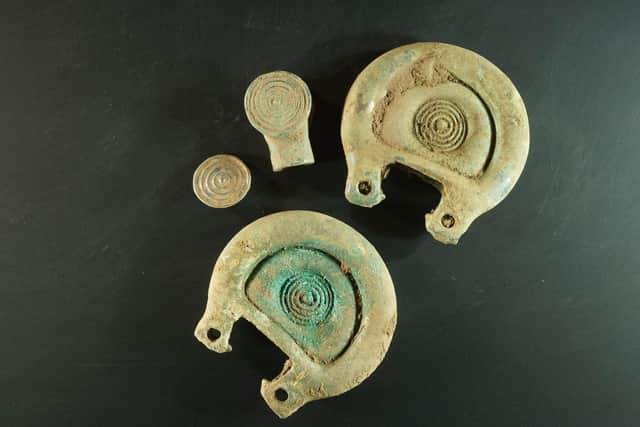Review into processing of archaeological discoveries
A review will be held into how archaeological finds are preserved by Scotland’s Treasure Trove, amid a surge in metal detecting.
It is the first time in 20 years that a consultation into the process for assessing and preserving ancient artefacts has been held by the Crown Office, which is responsible for the Treasure Trove Unit (TTU).
Advertisement
Hide AdAdvertisement
Hide AdDuring that time period, a metal detectorist discovered a hoard of Iron Age gold torcs in 2009 in Blair Drummond, near Stirling, allocated to National Museums Scotland the following year.


In June 2020, another metal detectorist found a late Bronze Age (c. 1150 – 800 BCE) hoard near Peebles, Scottish Borders, and recovered around 21 copper-alloy artefacts before realising there were more in the ground, which were later transported to a lab for analysis and have not yet been placed.
The King’s and Lord Treasurer’s Remembrancer (KLTR), John Logue, launched the consultation and said: “The role of Treasure Trove is to ensure that objects of cultural significance from Scotland’s past are protected for public benefit and preserved in museums across the country.
“We want to ensure that artefacts found in Scotland continue to provide maximum benefit to the public in understanding the significance of Scotland’s archaeological heritage.”
The 12-week consultation will inform a report and recommendations on the future of the TTU, and aims to gather views widely, from museums and public heritage organisations to metal detecting clubs and individuals with an interest in archaeology and heritage.
The KLTR also deals with ownerless and abandoned property, including the estates of those who die without leaving a will and who have no known relatives and the assets of dissolved companies.
The consultation, which will run from February 19 until May 13, is an opportunity for organisations and individuals to contribute their views on sustaining and improving the Treasure Trove system for present and future generations.
The system has been a “mainstay” in preserving Scotland’s archaeology and ensures objects of historical or cultural significance are recorded, preserved and allocated to museums for public benefit.
Advertisement
Hide AdAdvertisement
Hide AdOther significant archaeological finds included a Mesolithic harpoon, which was found by a child many decades before being reported to the TTU. The incomplete bone detachable harpoon head, dated to the Mesolithic Period, c. 5700 – 4000 BCE, was allocated to the West Highland Museum in Fort William in 2023.
A ring designed to remind the owner of their mortality was discovered in 2013, similar to a watch worn by Mary Queen of Scots. The interior of the hoop is engraved with the legend ‘Cogita Mori’ – ‘remember death’- picked out in black enamel, and it was allocated to Fife Cultural Trust in March 2014.
It comes amid continuing growth in the popularity of metal detecting, a lively context of professional and community archaeology throughout Scotland, and in a challenging financial climate for museums and heritage organisations.
Dr Stuart Allan, chairman of the Treasure Trove Review and formerly Keeper of Scottish History and Archaeology at National Museums Scotland, said: “We want to hear from the public and interested parties on a range of topics about the operation and potential of the Treasure Trove system.”